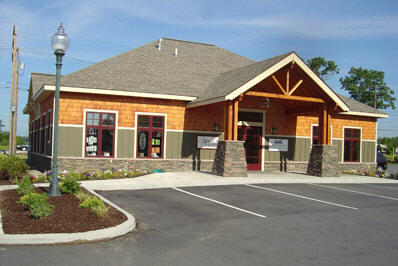Failed Back Surgery Syndrome Helped by Chiropractic
Print Article

The Journal of Physical Therapy Science published the results of a case study on January 1, 2024, documenting the improvement, as a result of chiropractic care, of a patient who was suffering with pain after failed back surgery. The National Library of Medicine states, "Failed back surgery syndrome (FBSS) is defined by the International Association for the Study of Pain as lumbar spinal pain of unknown origin either persisting despite surgical intervention or appearing after surgical intervention for spinal pain originally in the same topographical location."
The authors of this study speculate on the causes of FBSS by saying, "This condition may be the result of inadequate or poor pre-surgical diagnostics, concomitant conditions such as obesity, diabetes, mental health issues, and osteoporosis which all can contribute to FBSS." They also point out that there have not been many studies that record chiropractic successes after failed lower back surgery. "FBSS is not widely studied and reports of successful non-surgical treatment of FBSS are extremely rare in the medical literature."
In this case, a 27-year-old man went to the chiropractor for his lower back pain along with numbness in the left thigh. Five years earlier, the man had gone to a surgeon for his back pain. The surgeon recommended and performed surgery to add an instrument to increase space between the young man’s lower lumbar discs. The history records that the man’s pain got much worse, so a second surgery was performed to remove the instrument. Since then, the man has suffered with worse than his original lower back pain which he rated as between a 6 and 7 out of ten, with 10 being the worst. The study reports that the original records about the man’s surgery were unavailable because the surgeon was incarcerated.
A comprehensive chiropractic examination was performed along with spinal x-rays. As a result of the examination, a specific chiropractic care plan was started which included specific spinal exercises. A re-evaluation of the man’s condition was performed after the first five months of chiropractic care. That examination revealed that the man had experienced a 50% reduction in his back pain. Additionally, a number of the specific spinal tests showed that there was measurable improvement in the man’s spinal condition.
Chiropractic care continued after the first re-examination for a period of time. Six years after the start of chiropractic care, a follow-up assessment was performed to check on the man’s long-term progress. This assessment revealed that the man had seen a 70% improvement in his pain and was no longer experiencing any thigh numbness. There was also a structural improvement seen on x-rays in the man’s lumbar spine. Other tests showed that the man’s quality of life scores had also dramatically improved.
In the conclusion of this study, the authors commented on chiropractic helping patients who had previously received unsuccessful spinal surgery. "This case adds to the growing literature showing the efficacy of non-surgical spinal rehabilitative methods in improving outcomes in patients with spinal deformity and associated disabilities."
Print Article



